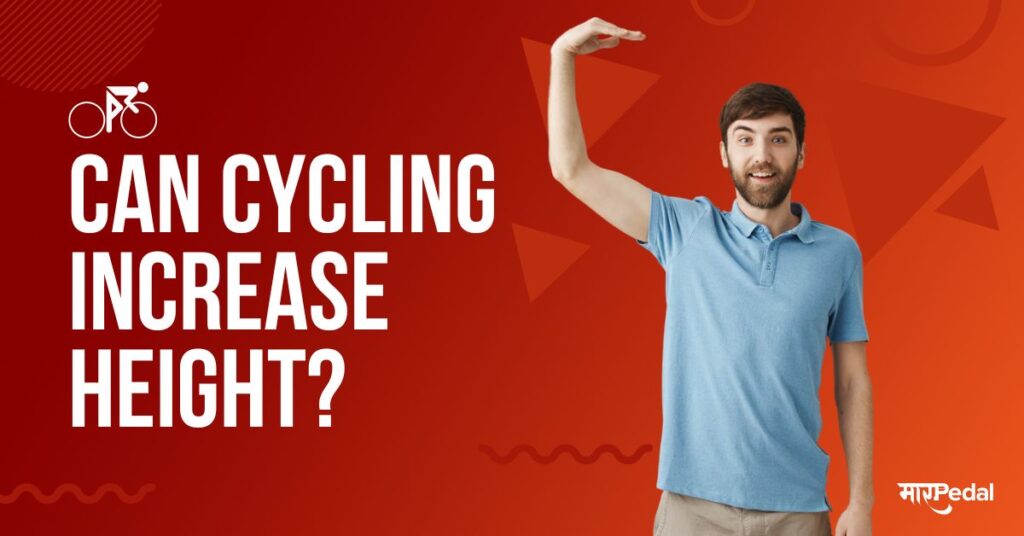
Cycling is a popular cardio exercise that is low-impact on the joints. However, some cyclists develop pain and injury in the gluteal area, known as gluteal tendinopathy. This raises the question: is cycling actually good for the glutes and safe for people with gluteal tendinopathy?
In this comprehensive guide, we will analyze the effects of cycling on the glutes, examine the causes of gluteal tendinopathy, provide cycling tips to prevent injury, discuss treatment options, and offer a final verdict on whether cycling is advisable for those with gluteal tendinopathy.
Glute Anatomy and Function
- The glutes consist of three muscles – gluteus maximus, gluteus medius, gluteus minimus.
- They are the largest muscles in the human body.
- Located in the buttocks, they connect the pelvis to the femur bones.
- Primary functions are hip extension, abduction, and external rotation.
- Provide power and stability for movements like walking, running, and climbing stairs.
- Weak glutes can alter gait mechanics and lead to injuries.
Is Cycling a Cause of Gluteal Tendinopathy?
There are mixed opinions on whether cycling primarily contributes to the development of gluteal tendinopathy:
Theories supporting cycling as a cause
- Repetitive hip extension during pedaling may strain the gluteal tendons over time.
- The seated position causes an anterior pelvic tilt, which can overload the glutes.
- Cycling may create muscle imbalances between hip flexors and glutes.
See also: Does Cycling Reduce Hip Fat? Discover the Truth Here!
Theories refuting cycling as a cause
- Impact from running has more evidence linking it to gluteal injuries.
- Weak glute muscles and poor pedaling form are bigger risk factors than cycling itself.
- Cycling primarily uses the gluteus maximus, which is rarely injured.
- The lower resistance from cycling may not trigger tendinopathy like weightlifting.
The jury is still out on whether cycling directly causes gluteal tendinopathy. But poor cycling biomechanics likely contributes by overworking underconditioned glutes.
Glute Imbalances that Lead to Tendinopathy
Cyclists are prone to muscular imbalances that can set the stage for gluteal tendinopathy:
- Overactive hip flexors from prolonged sitting and pedaling in a flexed position.
- Weak gluteus medius from underuse while cycling in a seated position.
- Tight iliotibial band and weak gluteus minimus from lack of lateral/rotational movements while pedaling.
These imbalances alter pelvic alignment, shift weight bearing, and strain the gluteal tendons. Targeted exercises and proper bike fits are crucial to prevent injury.
Risk Factors for Cyclists
Certain cyclists may be at higher risk for developing gluteal tendinopathy:
- Recent increase in training volume or intensity
- History of hip, pelvis, or back injuries
- Poor bike fit with excessive reach or low saddle height
- Muscle imbalances and weaknesses in the hips, core, or glutes
- Lack of cross-training and overuse of a single movement pattern
- Insufficient rest and recovery between cycling sessions
See also: How Can You Prevent Injury While Cycling?
Being aware of these risk factors can help identify if cycling is irritating the gluteal tendons before major injury occurs.
Symptoms of Gluteal Tendinopathy
Key symptoms signaling possible gluteal tendinopathy in cyclists include:
- Pain and tenderness near the hip/pelvis, especially at the greater trochanter
- Aching pain that radiates down the side of the hip and thigh
- Stiffness and tightness in the hips when getting up from sitting
- Reduced power and endurance when cycling
- Discomfort and weakness when activating the glutes
- Difficulty performing daily activities like stair climbing
If these symptoms persist for multiple weeks, it is wise to consult a sports medicine professional for diagnosis and treatment.
Can Cycling Exacerbate Existing Gluteal Tendinopathy?
For those already diagnosed with gluteal tendinopathy, the repetitive hip motion of cycling may aggravate the injured tendon and prolong healing. Key considerations:
- Continued tendon strain will increase inflammation and degeneration
- The flexed position places more pressure on the aggravated tendon
- Pain may cause biomechanical changes and compensation patterns
- Modifications and expert guidance are needed to avoid reinjury
- Complete rest may be required to allow the tendon to heal before returning to cycling
Careful cycling under a physical therapist’s supervision may be okay depending on the severity. But continuing to ride without changing mechanics may worsen the condition.
Cycling Modifications to Prevent Gluteal Tendinopathy
While cycling in and of itself is not proven to cause gluteal tendinopathy, there are several adjustments cyclists can make to prevent injury:
Proper Bike Fit
- Optimize saddle height, fore/aft position, handlebar reach and angle
- Ensure sit bones properly aligned with pedal axle
- Avoid excessive anterior pelvic tilt
Strength Training & Stretching
- Strengthen glutes, core muscles, and hip stabilizers
- Stretch tight hip flexors, quadriceps, and iliotibial band
- Perform targeted glute activation exercises before riding
Mix Up Training
- Include strength workouts, yoga, and cross-training to complement cycling
- Take regular rest days to allow muscles to recover
- Change cycling positions occasionally (seated vs. standing)
Proper Pedaling Technique
- Limit rocking hips side-to-side and irregular pedal strokes
- Maintain a smooth circular pedal stroke, distributing force evenly
Treatment Options for Cyclists with Gluteal Tendinopathy
If a cyclist develops gluteal tendinopathy, these conservative treatment strategies may facilitate recovery without requiring time off the bike:
- Rest – Take days off cycling to allow tendon recovery. Cross-train to maintain fitness.
- Ice – Apply ice packs to help control pain and inflammation.
- Medication – NSAIDs like ibuprofen can temporarily alleviate tendon pain and swelling.
- Physical Therapy – Stretching, massage, strength exercises, taping,Modalities like ultrasound or iontophoresis.
- Kinesiology Tape – Specialized tape lifts the skin, improving blood flow and taking pressure off the tendon.
- Shoe Wedges or Orthotics – Lifts under the shoe decrease tension on the injured tendon.
- Platelet-Rich Plasma (PRP) Injections – A regenerative treatment option when conservative measures fail.
Seeking professional treatment promptly can optimize recovery and avoid prolonged time off the bike.
When to See a Doctor for Gluteal Tendinopathy
It is advisable for cyclists to consult a sports medicine doctor or orthopedic specialist if they experience these red flags:
- Hip/gluteal pain lasts beyond 2 weeks
- Pain severe enough to disrupt sleep
- Visible swelling over the greater trochanter
- Difficulty walking normally
- Pain persists despite rest and medication
- Numbness, tingling, or other neurological symptoms
- No improvement after 6 weeks of focused rehabilitation
Early diagnosis and treatment prevents small injuries from becoming larger problems. Doctors can assess biomechanics, prescribe targeted exercises, provide pain relief options, and determine if advanced treatments may be warranted.
Can Cycling Help Rehab Gluteal Tendinopathy?

While continuing to cycle through injury should be avoided, incorporating cycling into rehab under medical guidance can have several benefits:
- Maintains cardiovascular fitness while minimizing impact forces.
- Improves range of motion as the tendon heals.
- Allows gentle strengthening of glute muscles.
- Cycling does not load the tendon as heavily as running/jumping.
- Easy spinning can help vascularize the tendon to aid healing.
- Helps identify any biomechanical changes needed before fully returning to cycling.
With limits on resistance, mileage, and frequency, light cycling can complement strength work, stretching, and other rehab exercises.
Safe Return to Cycling Following Injury
After recovering from gluteal tendinopathy, cyclists should slowly ramp up training volume to avoid reinjury:
- Begin riding easy short distances on flat routes.
- Build weekly mileage by no more than 10% at a time.
- Add climbing, sprints, and faster cadences gradually.
- Closely monitor pain levels and stop if symptoms flare up.
- Continue hip, gluteal, and core strengthening exercises.
- Receive clearance from doctor prior to racing or riding centuries.
- Refrain from back-to-back hard cycling days.
- Be very in tune with body to detect problems early.
- Consider investing in a professional bike fit.
A slow, strategic return to cycling helps ensure the glutes stay healthy and injury-free.
Maintaining Hip and Glute Health
All cyclists can practice these habits year-round to protect the hips and glutes from overuse injuries:
- Perform hip and glute focused strength training 2-3x per week.
- Include core exercises that link upper and lower body.
- Stretch hip flexors, piriformis, IT band following rides.
- Get regular sports massages to release tight tissues.
- Use foam rollers and lacrosse balls to self-massage.
- Wear proper cycling shorts and get professionally fit to your bike.
- Listen to your body and take a rest day when fatigued or sore.
- Fuel adequately and get sufficient sleep to aid recovery.
- Cross-train with low-impact activities like swimming, yoga, or elliptical.
Conclusion
While the relationship between cycling and gluteal tendinopathy is debatable, measures can be taken to prevent this detrimental overuse injury. Cyclists should focus on building balanced lower body strength, maintaining proper alignment and form on the bike, and monitoring early warning signs from their body.
If diagnosed with gluteal tendinopathy, rehabilitation guided by a sports medicine professional enables most athletes to eventually resume cycling and restore their performance. With awareness and preventative care, gluteal tendinopathy does not have to halt the enjoyment of cycling. Use the proven tips in this guide to keep the glutes and hips healthy for miles on the bike.
FAQs
Is it safe to cycle with gluteal tendinopathy?
Cycling with existing gluteal tendinopathy is generally not advised as it can aggravate the injury. Take time off the bike and undergo treatment until pain and inflammation resolves.
Should cyclists stop riding if they develop glute pain?
Yes, take a break from cycling if gluteal and lateral hip pain persists for multiple rides. This alerts the body to injury and prevents further damage.
What exercises help gluteal tendinopathy?
Targeted stretches, massage, and strengthening moves for the glutes, hips, core, and posterior chain facilitate recovery. Specific exercises will be prescribed by your physical therapist.






